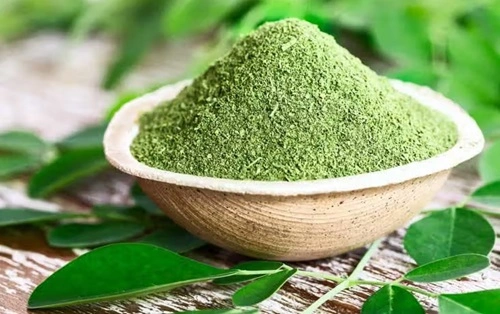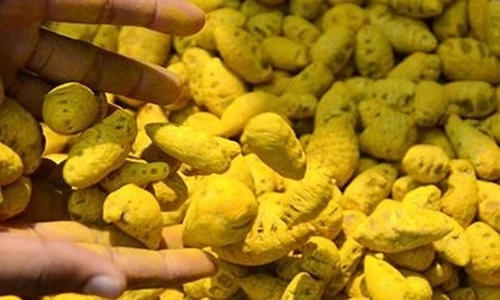Moringa, commonly known as “drumstick” or “Sahjan” in India, is a highly nutritious and versatile crop. It is cultivated for its leaves, pods (drumsticks), flowers, and seeds. Known as the “Miracle Tree”, moringa is rich in vitamins (A, C, and E), calcium, iron, potassium, and protein, making it a significant contributor to nutrition, food security, and economic prosperity.
Moringa is cultivated widely in Tamil Nadu, Andhra Pradesh, Karnataka, Maharashtra, Bihar, West Bengal, Uttar Pradesh, and other regions. Its adaptability to drought-prone and semi-arid conditions makes it a favorable crop for Indian farmers. Moringa varieties are classified based on their pod yield, growth habit, flowering season, and adaptability to climatic conditions.
In this article, we explore more than 10 top moringa varieties in India, their characteristics, regions of cultivation, and specific uses.

1. Periyakulam 1 (PKM-1)
PKM-1 is the most widely cultivated hybrid moringa variety, developed by the Horticultural Research Station in Tamil Nadu.
- Type: Annual
- Maturity: 6–7 months after sowing
- Pod Length: 45–70 cm
- Regions: Tamil Nadu, Karnataka, Andhra Pradesh, Maharashtra
- Characteristics:
- High-yielding with long, slender pods
- Early flowering variety with continuous harvests
- Tolerant to drought and pests
- Uses: Drumstick production, leaf and flower consumption
2. Periyakulam 2 (PKM-2)
PKM-2 is an improved version of PKM-1, developed for enhanced pod size and higher yield.
- Type: Annual
- Maturity: 7–8 months after planting
- Pod Length: 60–90 cm
- Regions: Tamil Nadu, Andhra Pradesh, Karnataka
- Characteristics:
- Higher productivity compared to PKM-1
- Tolerant to pests and diseases
- High protein content in leaves
- Uses: Pods for vegetables, leaves for nutrition supplements
3. Coimbatore 1
Coimbatore 1 is a high-yielding perennial variety known for its pod quality and consistent yield.
- Type: Perennial
- Maturity: Starts yielding in 8–10 months
- Pod Length: 45–60 cm
- Regions: Tamil Nadu, Kerala, Karnataka
- Characteristics:
- Grows well in tropical and subtropical climates
- Disease-resistant and drought-tolerant
- Produces pods throughout the year under irrigation
- Uses: Drumstick production, leaf consumption
4. ODC-3 (Odisha Drumstick Clone-3)
ODC-3 is a perennial variety developed for pod and leaf production in eastern India.
- Type: Perennial
- Maturity: 8–10 months
- Pod Length: 30–50 cm
- Regions: Odisha, West Bengal, Bihar, Uttar Pradesh
- Characteristics:
- High resistance to drought and adverse weather
- Continuous pod production over several years
- Uses: Vegetable pods, leaf powder production
5. Bhagya (Dhanraj)
Bhagya is a popular moringa variety developed for short-duration, high-yielding production.
- Type: Annual
- Maturity: 6–7 months
- Pod Length: 50–70 cm
- Regions: Maharashtra, Karnataka, Andhra Pradesh
- Characteristics:
- Uniform pod development and high yield
- Suitable for semi-arid and drought-prone regions
- Uses: Vegetable pods, leaves for fodder
6. GKVK-1
GKVK-1 is an improved variety released by the University of Agricultural Sciences, Bengaluru, for pod and leaf production.
- Type: Perennial
- Maturity: 8–10 months
- Pod Length: 45–55 cm
- Regions: Karnataka, Tamil Nadu, Andhra Pradesh
- Characteristics:
- Drought-tolerant and disease-resistant
- High productivity of both leaves and pods
- Uses: Drumstick production, leaf-based products
7. Rohit 1
Rohit 1 is a variety developed for high-quality leaves with rich nutritional content.
- Type: Perennial
- Maturity: 8–10 months
- Pod Length: 40–50 cm
- Regions: Maharashtra, Gujarat, Karnataka
- Characteristics:
- High leaf yield with excellent nutritional value
- Suitable for arid and semi-arid regions
- Uses: Leaf powder, moringa-based supplements
8. KDM-1 (Kottampatti Drumstick Moringa)
KDM-1 is a variety developed for high productivity under rainfed conditions.
- Type: Perennial
- Maturity: 7–8 months
- Pod Length: 30–40 cm
- Regions: Tamil Nadu, Andhra Pradesh
- Characteristics:
- Performs well under low water availability
- Consistent yield of pods
- Uses: Pods, fodder for livestock
9. Pusa Moringa
Pusa Moringa is an improved variety developed by IARI, New Delhi, for better adaptability in northern India.
- Type: Perennial
- Maturity: 9–12 months
- Pod Length: 35–45 cm
- Regions: Uttar Pradesh, Bihar, West Bengal
- Characteristics:
- Tolerant to low temperatures and drought
- Suitable for pod and leaf production
- Uses: Pods, leaves for nutrition
10. Narendra Moringa-1
Narendra Moringa-1 is developed by Narendra Deva University of Agriculture and Technology for high yields.
- Type: Annual
- Maturity: 6–7 months
- Pod Length: 40–50 cm
- Regions: Uttar Pradesh, Bihar, Madhya Pradesh
- Characteristics:
- Early flowering with high pod yield
- Tolerant to pests and diseases
- Uses: Vegetable pods, leaves for powder production
FAQs
Q1: Which is the most popular moringa variety in India?
A: PKM-1 and PKM-2 are the most popular and widely grown moringa varieties for their high yield and quality pods.
Q2: Which moringa variety is best for leaf production?
A: Rohit-1 and GKVK-1 are ideal for high leaf production and nutritional value.
Q3: Can moringa be grown in drought-prone areas?
A: Yes, varieties like ODC-3, Bhagya, and KDM-1 are drought-tolerant and suitable for arid regions.
Q4: What is the maturity time for PKM-1?
A: PKM-1 matures within 6–7 months after planting and provides continuous pod production.
Q5: Which moringa variety is suitable for northern India?
A: Pusa Moringa and Narendra Moringa-1 are suitable for northern Indian states due to their adaptability to cooler climates.
Conclusion
Moringa cultivation in India is gaining prominence due to its high economic returns, nutritional benefits, and adaptability to harsh climates. Varieties like PKM-1, PKM-2, ODC-3, and GKVK-1 provide farmers with options for high-quality pods, leaves, and seeds. By adopting improved varieties and best agricultural practices, farmers can enhance productivity and contribute to sustainable farming and nutritional security.

